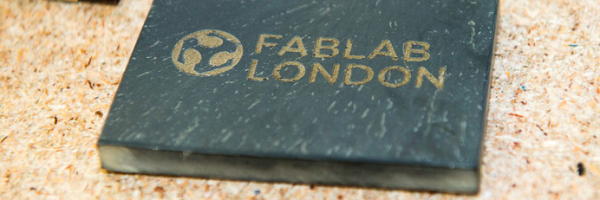In recent times the digital landscape has been embracing yet another area of innovation: digital fabrication. We hear from the Co-Founder of FabLab London, Tony Fish, on whether the emerging sector is likely to stick around or whether its just a trend
In order to survive, we must constantly be able to adapt our behaviour according to the changing environment, or we have to find a way to change the environment.
We are not challenged by all the possible visions of what 2025 and beyond could be, but rather how do we make one or more of them a reality. Whilst there is a significant dependence on us creating change, technology is making it faster and easier. The Internet and Web has transformed many processes and industries creating opportunity, uncertainty and risk. Much of this has come from adaptations to the way services are built and offered, and fundamentally this change has been enabled through software platforms that scale. The economics of ‘free’ have emerged and are somewhat understood but many would argue the potential impact of this new model has not yet been fully recognised.
Products, consumer equipment and technology hardware is starting to go through the same painful changes that industries (music, video, books) and companies (Kodak, Nokia) who were disrupted by now accepted software platforms has already gone; this time driven by concepts of digital fabrication. Advanced technology and scale manufacturing, the underpin of products, was once the domain of experts, with significant barriers to entry and required large investment budgets is giving way to cheaper and more flexible digital fabrications ideals and methods.
Over the past five years digital fabrication technologies such as 3D printing, which enable you to print anything from skin, bones, organs to metals and food have democratised personal and local production. These machines are now available on high street stores for less than $500. Laser cutters and CNC (computer numeric control) machines can be made at home using self-build platforms such as Instructables to provide bespoke personalisation and access to high precision cutting technologies.
These bedrocks of digital fabrication are complemented with extraordinarily creative and versatile technology design tools such as Arduino, Raspberry Pi, Photon and Edison can be purchased for less than $10 per platform. The software to drive these platforms is very simple, open and typically free, making these environments a must for maker, inventor or business to experiment with. The combination of these machines and tools are creating a time where you can personally make virtually anything.
When market forces, led by the economics of ‘free’, are combined with free access to the machines and tools they result in significant change and disruption; with the performance to price ratio of digital fabrication doubling every 18 months, this creates a potent recipe for new models in product design & development and more creative innovation. It is very likely that we are going to see a disruption in the ‘economics of scale and scope’ in traditional manufacturing as the means of production shifts to local and personal, leveraging technologies at a fraction of the cost when compared to mass produced goods.
The next five years will see robotics, automation, Internet of Things (IoT), products, local production, new design skills, new businesses and new models become the agents of change. If cash is the lifeblood, customers are food, then innovation is the reproduction system of our economy. Historically business innovation has been expensive, difficult and not always a considered priority and whilst there is an endless supply of books on the topic, they don’t solve the real dilemmas.
We’re seeing a new generation of innovation using freely available software, hardware, design tools and machinery; they have become democratised and accessible to all at a fraction of the historical cost. The time and investment needed for innovation has fallen and will continue to fall, creating strange market dynamics where game theory and scenario planning become very important to business leaders who want to remain on a level playing field. But which scenario will work in this new product innovation time?
- Do I buy the machines and digital tools now and go for leadership knowing in 18 months we will have the most expensive resource but be the most stilled?
- Wait and aim for cost leadership, learn from failure?
- Pick the wait and ignore strategy in the hope this trend is a fad?
- Buy something in 18 months rather than build or find a partner and look to outsource?
- Will companies who support closed, ownership and priority be able to win holding on to the view that IP is critical?
- Is open source a route?
Whilst there are no simple answers, the variables are too varied and each company, industry and competitive environment is unique, but if you recognise digital fabrication as a disruptive game changer, you can do something about it by visiting one of the 600 Fab Labs around the world or a local MakerSpace, HackSpace or craft workshop – there are thousands all working at grass roots and looking to create new opportunities.



